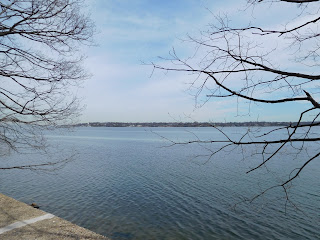Which is worse:
- laws, policies and regulations that govern cyclists but are conceived and enacted by people who don't ride bikes, or
- enforcement of said laws, policies and regulations by people who don't cycle?
A few months ago, I was caught in a "perfect storm", if you will, between the two.
It was around noon on a warm, late-summer day. The sun shone brightly in a clear sky. That meant something unusual for that time of the year in this part of the world: very little humidity, which is probably the reason why I felt the light wind wasn't slowing me down, even though I was pedaling into it.
At that moment, I was about two thirds of the way from my apartment to Greenwich, Connecticut. So, unless that wind changed direction (it wouldn't), I could look forward to it giving me a "boost" on my way home. Most important, though--at least at that moment--I was feeling really, really good: I was astride Arielle, my Mercian Audax, and each pedal stroke seemed to invigorate me.
Somewhere along Halstead Avenue, one of the major thoroughfares in the Westchester County town of Harrison, I noticed a police officer perched on a motorcycle. Alfred Hitchcock once said that if you are going to show a gun on a mantel, it has to be used to shoot somebody at some point during the movie. I actually remember thinking about that--why, I didn't know--when I saw that officer.
A couple of minutes later, I came to the town's major intersection: where Halstead crosses Harrison Avenue, next to the railroad station. I saw trucks and construction crews on the other side of Harrison; as I approached the intersection, I could hear more trucks rumbling behind me.
(Here is a Google image of the intersection, without the construction crews.)
Focusing on the construction work and trucks ahead of me, and seeing that no traffic was crossing Halstead from either side of Harrison Avenue, I increased my speed through the intersection so I could stay ahead of the trucks I'd heard rumbling behind me. I figured that I would be safer if they saw me ahead of them: Truck drivers, in my experience, tend to be more careful than most drivers and give the right of way as long as they see you. Also, I thought that if I crossed the intersection ahead of those trucks and whatever other traffic might be approaching behind me, I could more safely navigate the construction zone.
You can probably guess what happened next: The cop on the motorcycle zoomed up alongside me. At first, I didn't think anything of it. Then he yelled, "You, on the bike. Pull over!"
I did. In front of a funeral home.
"Let me see your license."
"What's the problem, officer?"
"You went through that red light."
"I did?"
He then lectured me about how New York State law says that bicycles are, in effect, vehicles and are governed in the same way. That meant I had to stop for the red light at an intersection. "You know, if there had been cross traffic, it could have ended really badly."
"But, officer, there wasn't any."
"You're still supposed to obey traffic signals."
I tried to explain to him that doing so could've landed me underneath one of those trucks. He was hearing none of it. Instead, he ran my license through his computer. He ordered me to step back as he read the screen and printed out the summons.
"Have you ever dealt with the police before?"
"No, sir."
Then, sotto voce, he told me to mail in the summons with a not guilty plea and the pre-trial date would be set.
Well, that day was the other day. I went to the Harrison court house and stood on a line with about three dozen other people who had traffic summonses of one kind or another. A man at a desk called each of us by name. He called mine, and said that he was going to do me a "favor" and, as a result, I wouldn't have points on my license or a record of any kind.
I then realized he was the officer who pulled me over and wrote the summons. "Go to the line on your right, Miss Valinotti," he ordered. "Have a good day."
While waiting on line, a few of us got to talking. It seems that Harrison has a reputation for issuing lots of traffic tickets. One person remarked that it's the town's second-biggest source of revenue, after property taxes. He might not have been kidding.
(Maybe I'm not the first one to think the town should be re-named "Harassment" or "Harrass-son".)
Anyway...I should mention that the day I was pulled over was the last Saturday in August. Although the officer who stopped me--or, for that matter, any other officer--would probably deny that there was a "quota" system in place, it's hard not to believe that I was stopped for any other reason.
It was probably the easiest way for the town of Harrison, New York to get 175 dollars from someone who doesn't live there--and who might not ever pass through again.











































